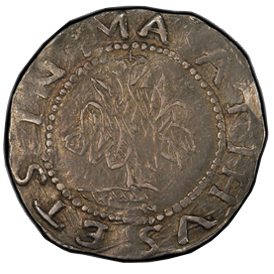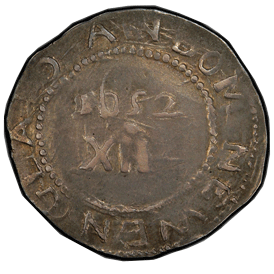ECONOMIC ROLE
Willow Tree
Move your cursor over the coin or tap it on your screen to see the reverse side.


- The coins were minted in Boston in the 1650s under the direction of a mint-master named John Hull and his assistant, Robert Sanderson.
- The General Court of Massachusetts authorized the minting of coins in response to the persistent shortage of coins. Trade with England, France, and Holland—the source of circulating coinage—had caused most coins to flow from the colonies to Europe. The shortage was exacerbated during the English Civil War in the 1650s which led to a disruption in the flow of newly minted coins from England to the colonies thus compelling the leaders of the Massachusetts Bay Colony to devise their own solution.
- The simplistic design of John Hull's early coins made them easy to counterfeit. Adding the willow, oak, and pine tree designs to the series was intended to discourage counterfeiting.
- Scholars believe these coins were cold-struck with a hand-held hammer. This explains their inconsistent quality and multiple impressions on the surviving Willow Tree coins.